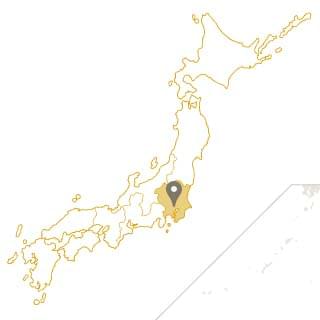An aspect of Japan that can be hard to understand is the dichotomy between its traditional life, which is in harmony with nature, and its city life, which is replete with buzzing neon and monolithic skyscrapers. How can one comparatively small country have both of these at the same time?
The answer comes to you when you glance at your watch—after zooming away on a train from the trappings of civilization, watching the suburbs thin out, and beholding the concrete landscape turn into green fields—and see that barely an hour has passed since your departure. Everyone in Japan’s cities, with their aggregation of people and kinetic way of life, knows that a different way of life is always close by. Our journey to Chichibu whisks us from the heart of Ikebukuro in the center of Tokyo to the bordering prefecture of Saitama to the northwest. Stepping off the Seibu Railway’s Laview Limited Express, you would never guess how close you are to the bustle of Tokyo.
That secure feeling of having the best of both worlds is tricky to pin down, but it is one that underscores Japanese people’s enjoyment of domestic holidays and is absolutely essential if you want to have truly “seen Japan.”
Speed down the white waters of Nagatoro
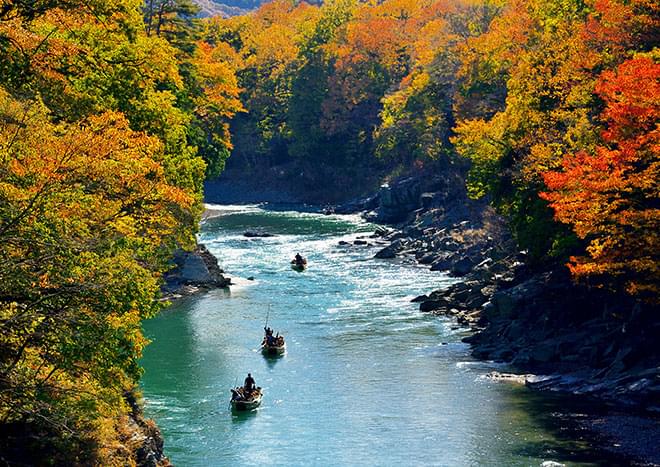
Most people travel to Chichibu by train, but even once there, you can easily navigate by public transport in this heart of the countryside. The first port of call is usually Nagatoro and the dynamic river boating down the Arakawa River, which would take you all the way back to Tokyo if you wanted to go that far.
You can get to Nagatoro Station via the Chichibu Railway, which is famous for its steam locomotive called the SL Paleo Express, and from there, you can easily go anywhere you want by walking or cycling on a rental bike.
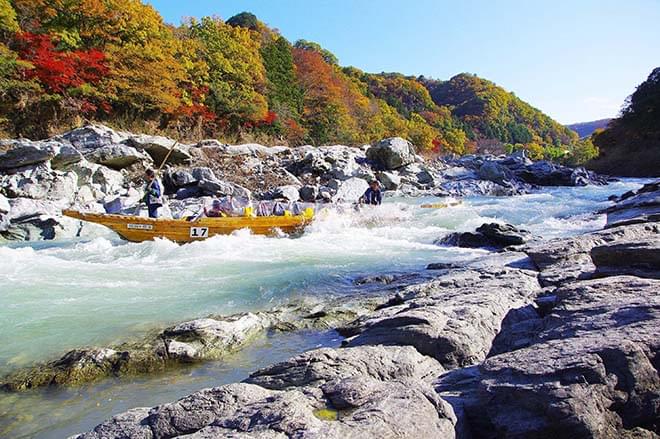
The best way to travel through the area, though, is by boat, and there are two routes to choose from: one starting and one ending at the Nagatoro Iwadatami rock formation. A registered Special Natural Monument of Japan, these striking slabs of rock are instantly recognizable. While the rocks are famous, the gorge that the river passes through is special too, being picture-perfect for the entire length of your ride. Although the valley is unsullied by buildings and punctuated by nature’s colorful tapestry, which changes with the seasons, you may find it hard to take it all in, because the ride down the river is itself the main event. In fact, the thrill of your ride will be largely dependent on the amount of rainfall received in the preceding week. Ride the river when its water level is low, and you will be savoring moments of tranquillity in nature. But if you ride on a day following a deluge, you will be grateful for the two seasoned pilot helming the vessel as you plunge through the rapids.
One pilot steers the vessel using a rudder at the rear, while the captain stands at the front—with a sense of balance that can come only from a life of navigating treacherous currents—armed with a stout punting oar to keep you off the rocks. In a boat with a rudimentary steering device and nothing but human effort to control it, you are at the mercy of the river, but that makes the ride all the more liberating. These river routes once constituted an important haulage system linking the countryside to Tokyo, but they quickly became a tourist attraction in Japan’s feudal Edo period (1603–1867), when people realized just how much fun they provided!
Although having quite a few shrines and temples (if you are interested, start with Chichibu Shrine, and then follow the route around the Seven Flower Temples of Nagatoro), Chichibu is essentially an agricultural hub. But during Japan’s industrial revolution, there was an incursion of mining activity, particularly the extraction of limestone to make concrete, which you probably walked on back in Tokyo. Now, however, there is a strong sense that the area is returning to its rural roots.
- Name:
- Nagatoro White Water Rafting
- Address:
- 489-2 Nagatoro, Nagatoro-machi, Chichibu, Saitama
- Availability:
- Early March through early December (heated boats available in December)
Return to the region’s roots at Terasaka Rice Terraces
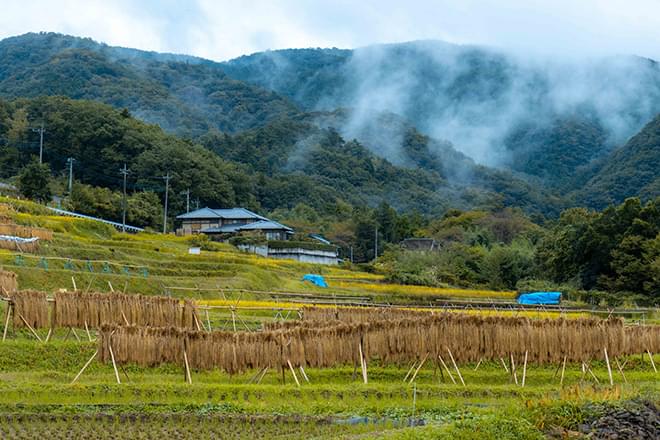
No place represents the enduring character of Chichibu better than the Terasaka Rice Terraces, a sloping patchwork of fields that is one of the few places rice is grown in the area. The climate of Chichibu is perfect for buckwheat and most vegetables, but cultivating rice is limited to this stretch of fields. Even more remarkable is that the fields are worked largely by local people and independent farmers, not just to harvest rice but to work together as a community, reclaiming the area’s natural beauty and farming heritage. This contrasts sharply with the quarrying that took place before in some of the surrounding mountains, which left unsightly, albeit impressive, scars.

An important community hub and now protected as part of Chichibu Geopark, the terraces offer various agricultural experiences. But people flock here mostly for the impressive sight of the gently woven paddies, the brilliant red higanbana flowers, which bloom in September, and the fields illuminated with blazing lanterns during the Terasaka Hotaru (Firefly) Festival, which accompanies the flooding of the paddies in late June and early July.
- Name:
- Terasaka Rice Terraces
- Address:
- 1846 Yokoze, Chichibu, Saitama
- Availability:
- A 15-minute walk from Yokoze Station on the Seibu-Chichibu Line. Please stay on the paths indicated.
Refresh yourself with sumptuous Chichibu fruit
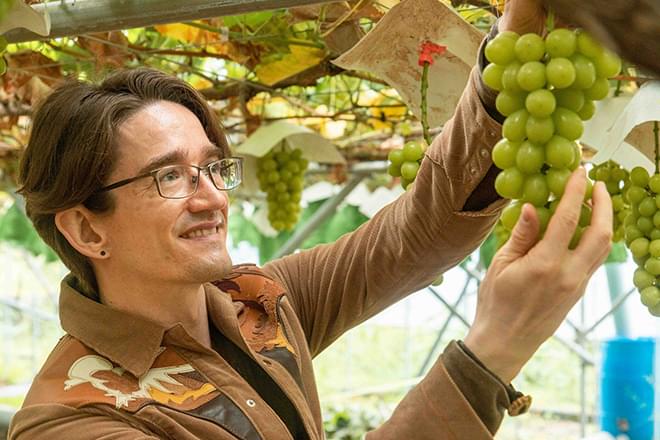
Chichibu’s rice and buckwheat have proved historically important, but these days, if you say “Chichibu,” its fruit is much more likely to come to mind. The climate of the region has proved a winner for certain grape varieties through the summer and early autumn, with strawberries taking over through the winter and spring.
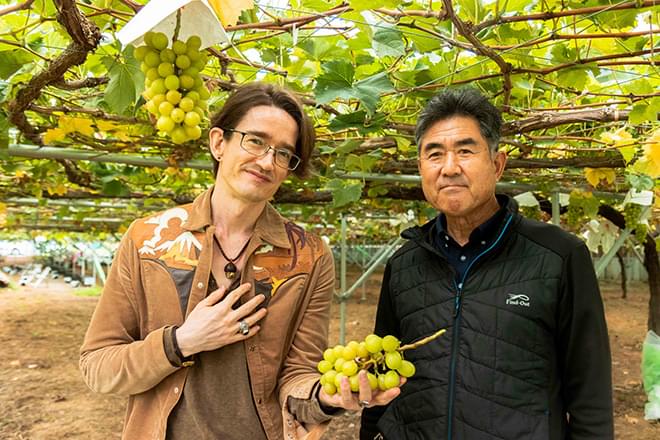
Fruit farming in the area is a couple of generations old, which makes it quite young—well, young for Japan, where farms that have endured for centuries are not rare—but there is a reason Chichibu fruit farming has been on a rapid rise since the 1950s. Chichibu produces a number of local grape varieties, which carry its name (for example, the Chichibu Yama Ruby), in addition to well-known Japanese varieties like the Shine Muscat, which are already accepted as a premium variety abroad.
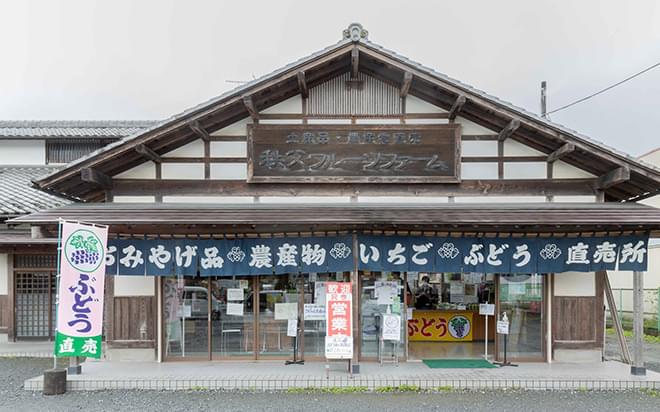
There is no better way to see this slice of Chichibu life than to get out under the vines yourself at one of the local farms. There are numerous places to do this, but the Chichibu Fruit Farm is a great starting point, particularly if you want to grab some BBQ before having dessert out in the vineyard. Whether you choose all-you-can-eat fruit with a BBQ or just fruit picking, you are likely to feel lucky when you recall the price of fruit in a Tokyo department store.
This writer’s goal was not to seek out perfection on the vine but rather to head for the smaller grapes with a hint of yellow, which the locals advised are the ones with the real explosions of flavor.
- Name:
- Chichibu Fruit Farm
- Address:
- 877-1 Shimokagemori, Chichibu, Saitama
- Availability:
- Multiple packages available depending on the season. Please check which fruits are in season before you visit.
A farmhouse fit for a conquering warrior!
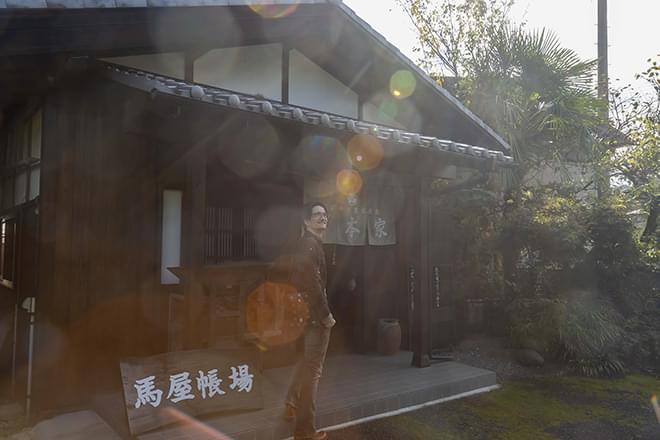
Having seen the here and now of Chichibu, you are ready to experience the traditional way of life that endures on the farms. That might summon an image of rustic simplicity, but you will find something rather more luxurious and decadent at Miyamoto-ke in the hills of Chichibu.

This historic farmhouse has existed for 200 years, but it has been exceptionally well renovated with much of the original architecture preserved. The owner is a former professional sumo wrestler (so you know the food will be good!), and a sumo theme runs throughout the various buildings, enhanced by a collection of enthralling sumo memorabilia, which the owner is happy to describe in detail. Among the ornate embroidered kesho-mawashi (ceremonial sumo aprons), you might even spot a sumo topknot, or chonmage, sitting in a glass case. This hairstyle is a symbol of a professional sumo wrestler, and the topknot must be cut off as a symbol of retirement.
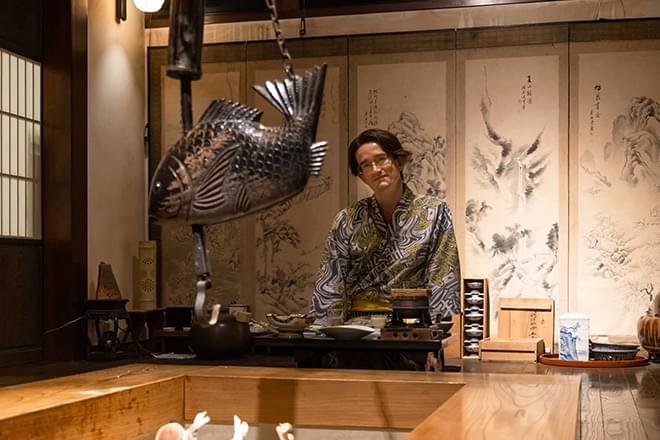
Rooms for overnight stays are available with Western-style beds or Japanese futons. Some rooms have private outdoor natural baths (onsen) overlooking the room’s own garden, and a few baths throughout the inn can be reserved if you want privacy. Of particular note is the firewood-heated o-gamaburo (cauldron bath), an iron pot literally big enough to accommodate a sumo wrestler or two. You might feel like you are dinner being cooked when you are in the pot, but it is actually a rare chance to experience how generations of Japanese people in the countryside used to bathe—it is highly recommended. Elsewhere, you will find baths with a dohyo (sumo ring) theme and baths overlooking traditional gardens—the choice is yours.
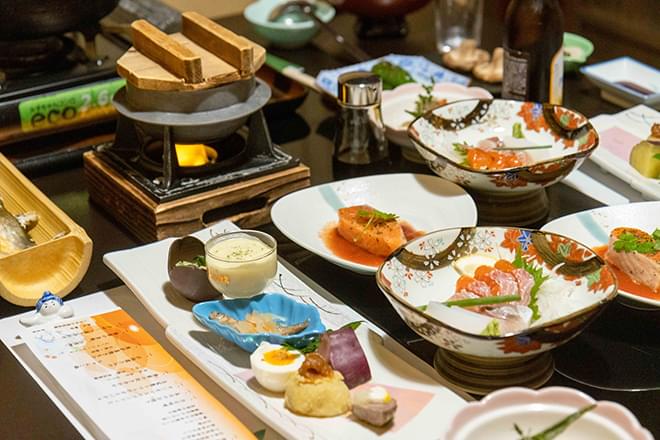
Refreshed after your bath, you can head off to the bar for before-dinner drinks in a converted kura (storehouse). Here, there are over fifty kinds of fruit liquor made with local produce. This is another side to the Chichibu area, whose liquors, craft beers, and whiskeys are rapidly on the rise internationally. Opt for something in strawberry if you are feeling fruity, but if you are seeking an adventurous evening, choose a drink from the many curious jars with mysterious contents.
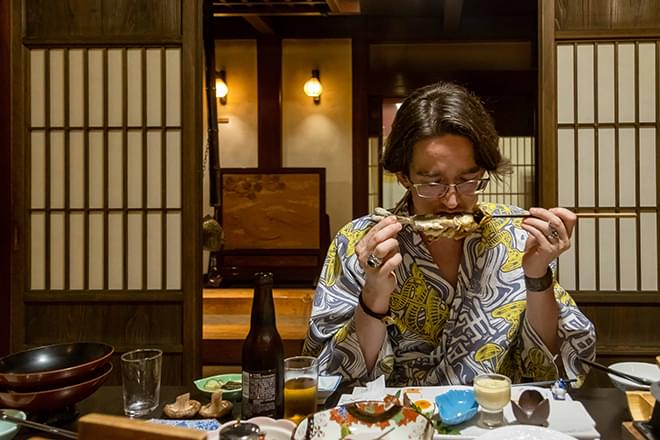
Off to dinner and a rare chance to eat around an irori (sunken hearth). In addition to the farmer’s favorite of skewered fish and vegetables slow-cooked over the embers, there is chanko-nabe, often called “sumo stew.” This is a very hearty feast of local ingredients that is anything but heavy. Rather, the broth is light, and you will find yourself easily working through the banquet.
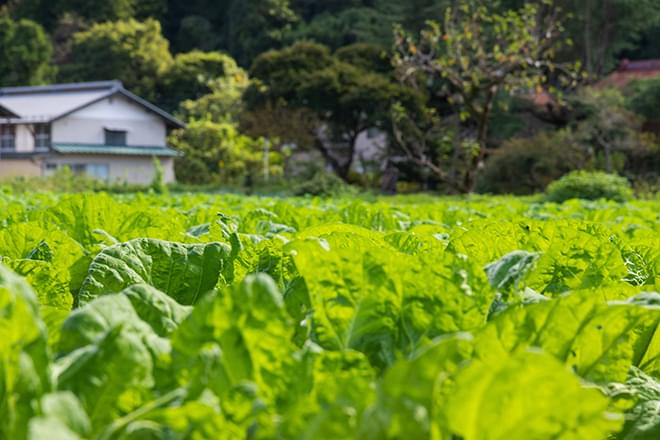
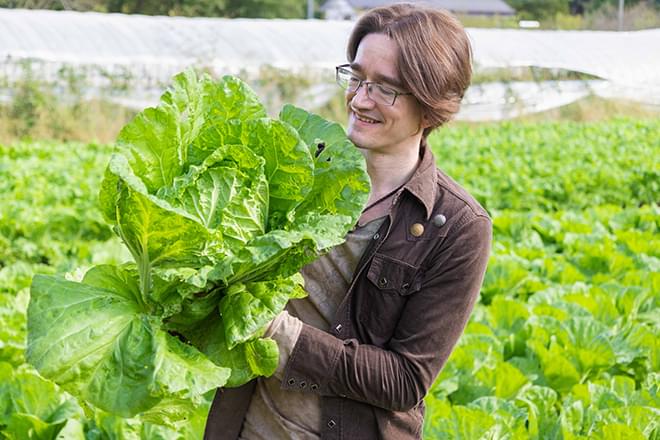
First, grab whatever is in season from the lush fields and head to the cooking school. Farmers historically subsisted on a diet of udon noodles because they are relatively easy to prepare and make every ingredient go a lot further.
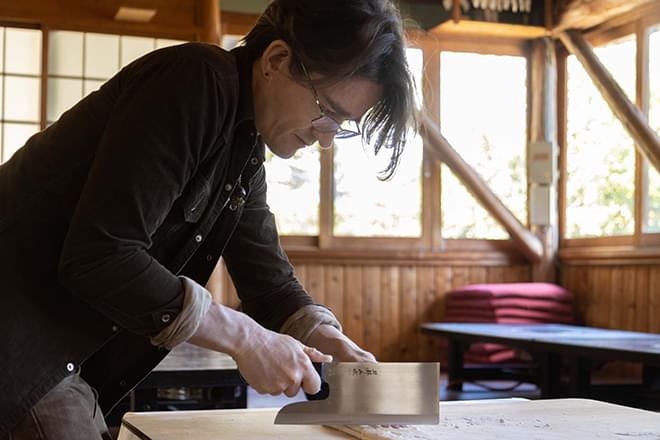

Making your own udon is surprisingly easy with guidance, and before you know it, everything will be simmering in the pot. There are a couple of udon traditions in Chichibu, and most involve eating out of a large communal pot to bring the community together.
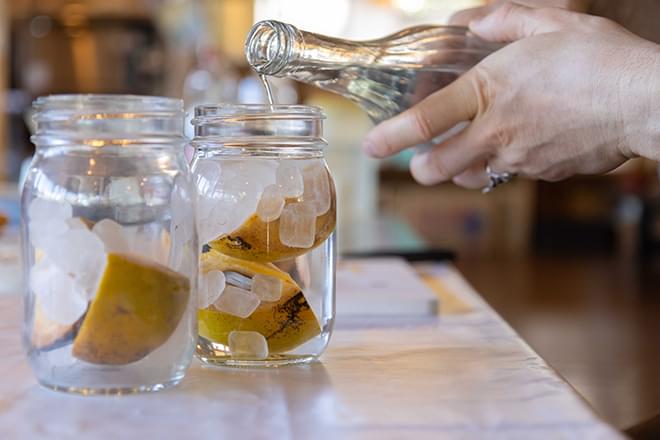
Finally, for a little cheeky keepsake, you can grab some fruit from the fields and make a jar of liquor to take home with you. You might be tempted to crack it open on the train as you head back to the city, but you will need to give it a month or two to really come into its own.
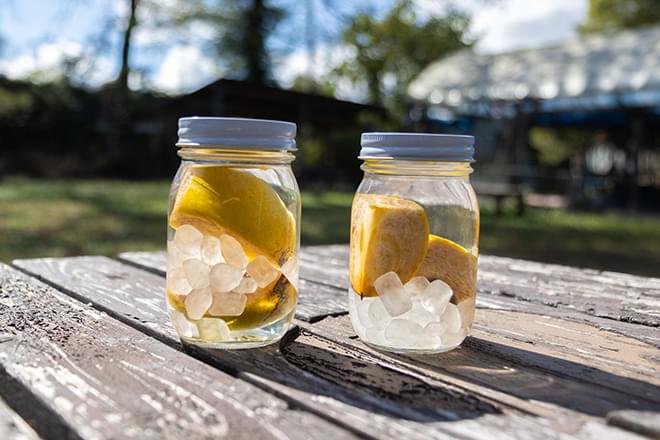
More important than anything is that the countryside is so close to the city and has such a different relationship with nature and food. In Japan, even in Tokyo, the countryside is always there for people to visit, and it will be there for you as well.
- Name:
- Miyamoto-ke
- Address:
- 510 Nagaru, Ogano, Chichibu, Saitama
- Availability
- Inn bookings and activity bookings are all available in English through the site below.

